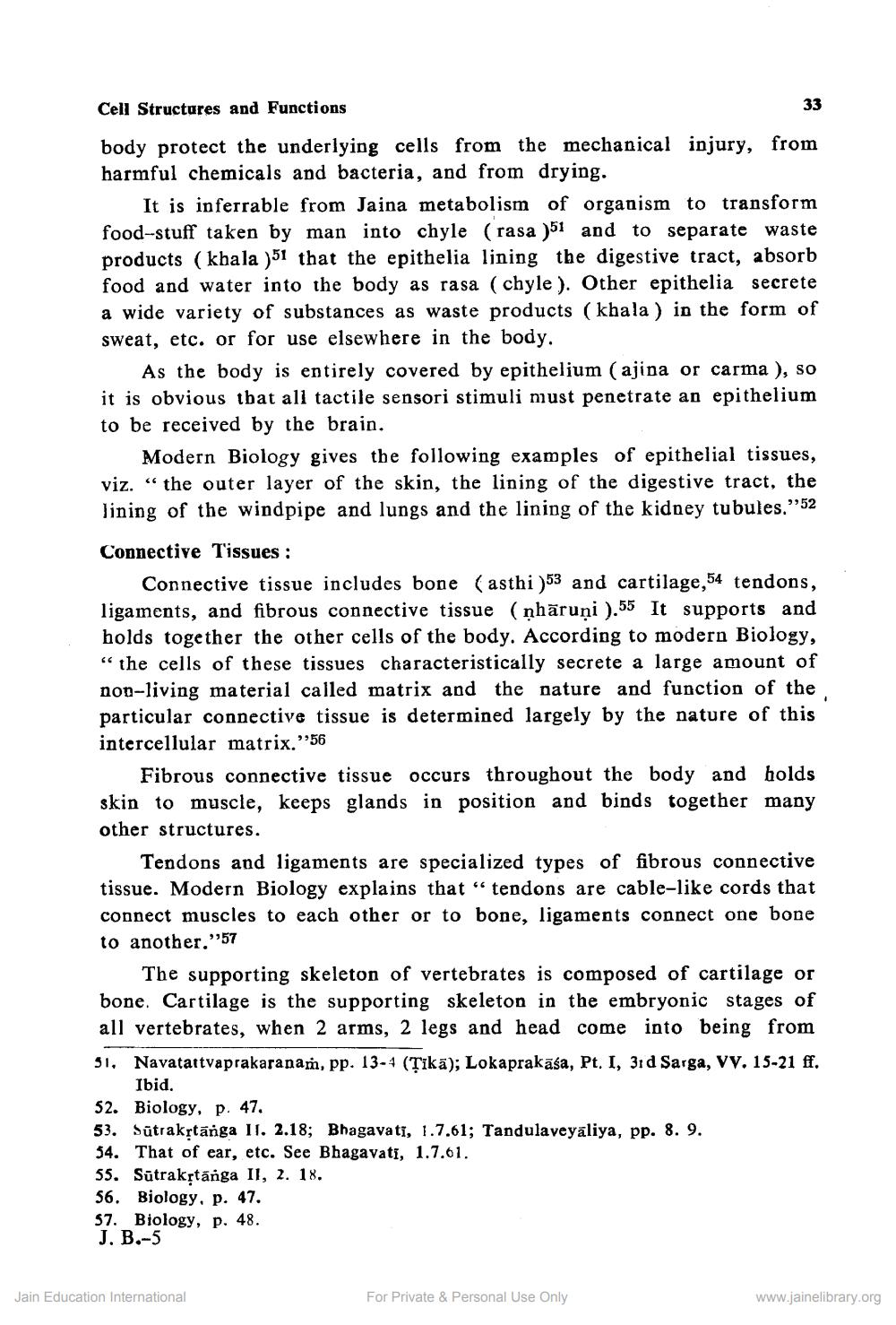________________
Cell Structures and Functions
33
body protect the underlying cells from the mechanical injury, from harmful chemicals and bacteria, and from drying.
It is in ferrable from Jaina metabolism of organism to transform food-stuff taken by man into chyle (rasa )51 and to separate waste products (khala )51 that the epithelia lining the digestive tract, absorb food and water into the body as rasa (chyle). Other epithelia secrete a wide variety of substances as waste products (khala ) in the form of sweat, etc. or for use elsewhere in the body.
As the body is entirely covered by epithelium (ajina or carma ), so it is obvious tbat all tactile sensori stimuli must penetrate an epithelium to be received by the brain.
Modern Biology gives the following examples of epithelial tissues, viz. “the outer layer of the skin, the lining of the digestive tract, the lining of the windpipe and lungs and the lining of the kidney tubules."52
Connective Tissues :
Connective tissue includes bone (asthi )53 and cartilage,54 tendons, ligaments, and fibrous connective tissue ( nhāruņi ).55 It supports and holds together the other cells of the body. According to modern Biology, “the cells of these tissues characteristically secrete a large amount of non-living material called matrix and the nature and function of the particular connective tissue is determined largely by the nature of this intercellular matrix."'56
Fibrous connective tissue occurs throughout the body and holds skin to muscle, keeps glands in position and binds together many other structures.
Tendons and ligaments are specialized types of fibrous connective tissue. Modern Biology explains that “tendons are cable-like cords that connect muscles to each other or to bone, ligaments connect one bone to another."57
The supporting skeleton of vertebrates is composed of cartilage or bone. Cartilage is the supporting skeleton in the embryonic stages of all vertebrates, when 2 arms, 2 legs and head come into being from 51, Navatattvaprakaranam, pp. 13-4 (Țikā); Lokaprakāśa, Pt. I, 31d Sarga, Vv. 15-21 ff.
Ibid. 52. Biology, p. 47. 53. Sūtrakrtānga 11. 2.18; Bhagavati, 1.7.61; Tandulaveyaliya, pp. 8. 9. 34. That of ear, etc. See Bhagavati, 1.7.61. 55. Sūtrakstānga II, 2. 18. 56. Biology, p. 47. 57. Biology, p. 48. J. B.-5
Jain Education International
For Private & Personal Use Only
www.jainelibrary.org




